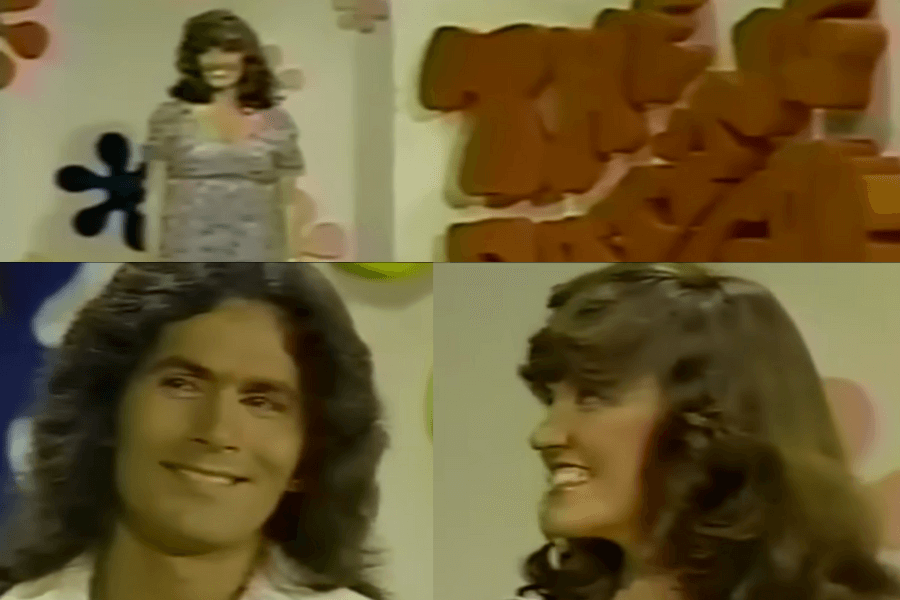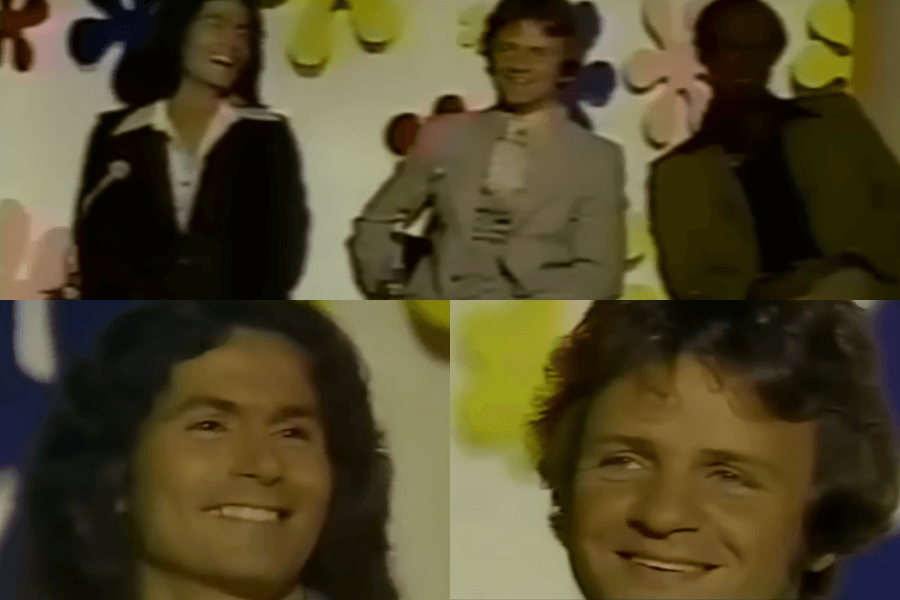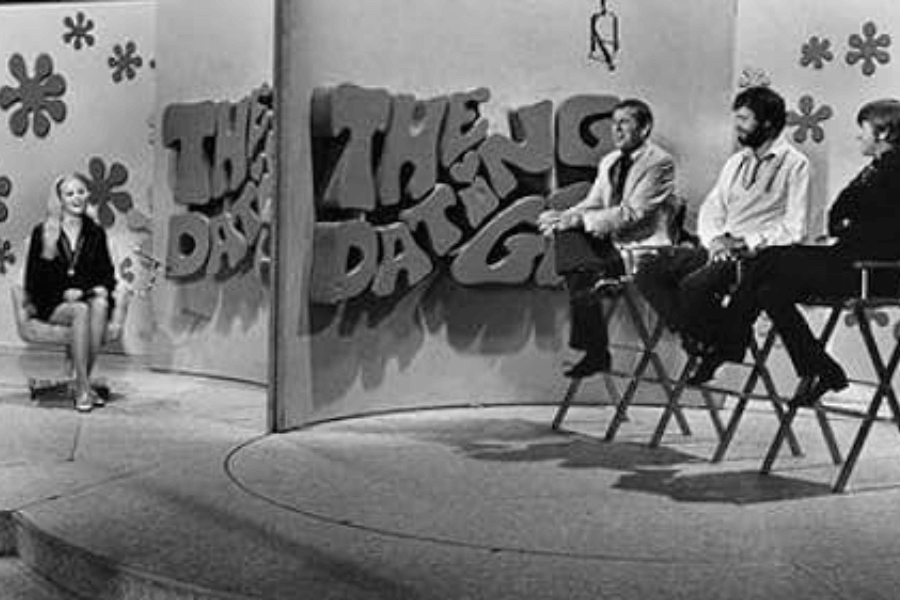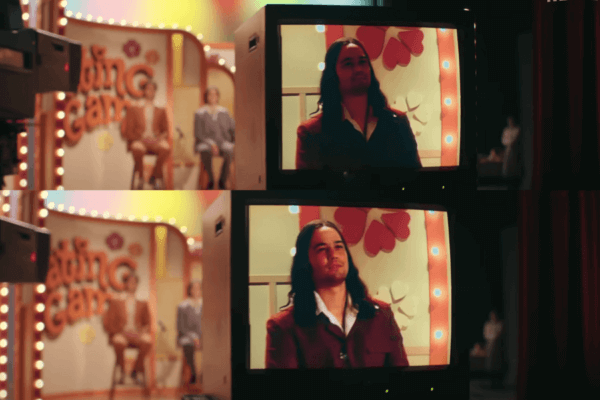Products are selected by our editors, we may earn commission from links on this page.
Imagine discovering that the charming contestant who just won your heart on a dating game show is actually a serial killer. How would you respond? In her directorial debut, Woman of the Hour, Anna Kendrick dives into this chilling true-crime story, blending suspense and intrigue to explore the darkest twists of reality!
Surpassing Expectations: Internet Praises Kendrick’s Directorial Debut

Who would’ve thought we’d hear the name “Anna Kendrick” as a director and not just as the woman who sang the famous “Cup Song”? This shift in her career was seriously unexpected!
Anna Kendrick’s directorial debut, Woman of the Hour, is making waves online, with fans and critics alike praising her unexpected skill behind the camera. Kendrick is meeting — and even surpassing — expectations.
Many fans are lauding Kendrick, expressing admiration for her ability to tackle complex themes with nuance and suspense. She delivered a gripping true-crime narrative, despite this being her first directorial project. What a talent!
Kendrick Gave Herself a Challenge

“It’s like pushing yourself off a cliff,” is how Kendrick describes taking on the directorial role. Known for her upbeat roles, she took on the challenge of working outside her comfort zone.
Assuming the dual role of director and lead actress, Kendrick embraced a new level of responsibility, and it wasn’t easy. She frequently asked for feedback from her colleagues.
Sometimes she struggled to find her own voice, but eventually, surrounded by a supportive team, Kendrick meticulously shaped each scene, ensuring that the dark, suspenseful tone matched her vision.
How Anna Kendrick Brought a Real-Life Horror to the Screen

Isn’t it easier to write about horror and danger if you’ve experienced it first-hand? Kendrick understands the threats women face, an ancient reality.
Drawing from a 1970s true-crime case, Kendrick masterfully recreates unnerving moments of deception and danger. She captures the psychological tension of a real-life horror story without exploiting the terror the victim experienced.
Through feminine instinct, desolate spaces, and contrasting lighting, Kendrick contributes to the movie’s success.
The Tiki Bar Scene

The tiki bar setting feels casual at first, almost cozy, but there’s an underlying tension that Kendrick masterfully plays with. (Disclaimer: it’s fiction, but the scene is how they imagined Alcala and Bradshaw’s interaction.)
She turns a simple date into a subtle, unsettling confrontation, leaving you wondering how something so ordinary could feel so dangerous. (Thank God for the waitress in that scene!)
By the end, you realize the scene isn’t just about drinks and small talk—it’s a psychological chess match. Kendrick’s character wasn’t trying to win; she just wanted to escape.
The Million Dollar Question: Which One of You Will Hurt Me?

Talk about a gut punch line—this one just lingers in your system! Delivered with eerie simplicity, it hits you right in the bones, like it’s been aimed directly at you.
Simple as it may seem, it’s a masterstroke of screenwriting and acting. It’s a line that makes you stop and think, “How many times have we all wondered this, even if only in our heads?”
When the makeup artist says it, you can almost hear a pin drop. The way she delivers it is quiet but loaded with dread, as if she’s almost bracing herself for the inevitable.
The Parking Lot Scene That Made Us Hold Our Breaths

Have you ever given a fake phone number to a stranger because they wouldn’t stop asking? But what if they ask you to repeat it? (I’ve done this so many times!)
You think you’re safe, but what if they ask you to recite the random numbers again? How do you think they’d react if they realized it was fake?
Imagine it’s late, and you’re alone with that guy in a parking lot, shadows stretching across the asphalt, making everything feel ominous. Would you run? Or would you try to recall the numbers?
How Well Can You Really Know a Person?

Ever wonder how well you truly know someone? Sure, you might know their favorite color, their pet’s name, maybe even their deepest fears… or so you think.
Consider this: people can spend years together and still barely scratch the surface of who they really are. So what makes it safer to trust someone you’ve just met?
Imagine the shiver of discovering that someone you trusted has a hidden life, a dark past, or worse—intentions that don’t match the smile they show.
The Choice to Center the Victims’ Experience

In true-crime storytelling, centering the victim’s experience rather than glorifying the perpetrator is a growing focus. (After all, you shouldn’t end up admiring the likes of Ted Bundy after watching a true-crime series about him!)
Kendrick emphasized the victim’s experience to shift society’s view on justice, reinforcing that victims deserve our attention. So, if you’re considering dressing as a serial killer for a Halloween costume party, maybe think twice!
By focusing on the victim’s life, dreams, and relationships, stories become richer and more humanizing. Aspiring directors should take a lesson from Kendrick’s choice: your art carries a message, and you are responsible for it.
The Tangible Difference to Work with a Woman Director

Female directors change the atmosphere entirely. If you’ve seen Greta Gerwig directing Lady Bird, you’d understand what Autumn Best, an actress in Woman of the Hour, meant by this.
Seeing women support each other makes Autumn more hopeful for the future of cinema. Female directors tend to foster collaborative environments where every voice is heard.
Who doesn’t like working with people you can get along with? Aside from the salary, you need a community in your workplace that protects your interests and brings out your best!
The Twisted Tale That Inspired Woman of the Hour

Though some scenes in the movie are fictional, Kendrick based it on a real serial killer from the 1970s who won The Dating Game show.
It serves as a perfect metaphor for how well you can know a person. Isn’t it terrifying to think the person you chose to date could be a ruthless serial killer?
Woman of the Hour masterfully explores how Rodney Alcala used his charm to conceal his crimes, leaving audiences with a chilling reminder of the facades people can wear.
Could You Spot a Killer? How Charm Can Conceal Dark Secrets

Even if you have the keenest eyes, you can’t spot a killer in just one glance, especially if they possess a disarming charm.
We often assume we’d recognize dangerous people, yet history shows us that killers can mask their intentions behind charisma and charm. It’s like the devil disguising himself as an angel.
When someone appears genuine and likable, our defenses drop, and we may overlook warning signs that would otherwise alert us. Should we start doubting people with sweet smiles?
How a Serial Killer Fooled the Dating Game and Its Audience

This is where words become powerful. Imagine your lover did something terrible to you, but just hearing them say, “I love you,” makes your world spin again.
Alcala’s smooth-talking persona won over The Dating Game bachelorette Cheryl Bradshaw. His ability to mask his sinister intentions highlights the disturbing reality that charm and confidence can often conceal dark motives.
Who would’ve thought that, under the bright lights of a game show, a monster could lurk in plain sight? Could your instinct sense that a serial killer was among the bachelors?
The Real Dating Game Show

The 1970s hit TV show The Dating Game seemed like harmless fun, pairing contestants with potential dates in front of a live audience — until a serial killer managed to get on the show.
Rumor has it that appearing on The Dating Game could raise one’s chances of achieving significant fame in Hollywood, which explains why Kendrick’s character, Bradshaw, took the opportunity to appear.
Have you heard of these names: Sally Field, Michael Jackson, Farrah Fawcett, Arnold Schwarzenegger, and Steve Martin? Some of these stars once played along with The Dating Game’s playful banter in the studio!
Fellow Bachelor Suspicious of Rodney Alcala

During the filming of The Dating Game in 1978, fellow contestants sensed something was off about Rodney Alcala. Described as “creepy” and “strange,” his unsettling demeanor didn’t go unnoticed by those around him.
“I always get my girl,” Alcala told a fellow contestant. His arrogance and confidence hinted at something sinister. Years later, those suspicions proved chillingly accurate.
Alcala, who appeared so harmless on a lighthearted show, was later convicted as a notorious serial killer. Trusting one’s instincts is crucial, eh? We shall trust our instincts more!
Bradshaw Had Acting Experience

Kendrick’s character in her film, Sheryl Bradshaw, is based on The Dating Game bachelorette Cheryl Bradshaw. She used Cheryl’s limited background to build the character, but not entirely.
Cheryl’s acting experience was incorporated by Kendrick for plot purposes. So, it’s no surprise that Sheryl is portrayed as an actress struggling to make it in Hollywood.
The replacement of the letter “C” with “S” in the first name is Kendrick’s way of implying that Sheryl is not an exact representation of Cheryl. Does this make your head spin? I hope not!
Alcala is Bachelor No.1 on Real Dating Game

Woman of the Hour tweaked Alcala’s contestant number. In the film, he’s introduced as Bachelor No. 3 (for suspense), but in reality, he was Bachelor No. 1.
Does it matter what number he was? Let’s focus on his presence on the show, amidst his ongoing crimes! They clearly failed to conduct thorough background checks on their contestants.
A word of advice for game show producers out there: please have your staff check contestants’ profiles! Don’t mess it up this time. We have the technology now — it shouldn’t be that tedious!
Bradshaw Felt Uncomfortable with Alcala after Seeing Him Face to Face

When Cheryl Bradshaw first saw Rodney Alcala up close on The Dating Game, something felt wrong. Although he’d won her over with his witty answers, his presence made her uneasy.
The “weird vibe,” as she called it, might have been her intuition warning her. Trusting that strange feeling, her decision to decline saved her life from potential danger.
Be careful with people who are good with words; they might use it against you! Don’t let charm cloud your instincts. Danger is always nearby.
The Dating Game Did Little to Expose His Criminal Record

Unfortunately, this is sad news to share. Even though Alcala was in front of everyone’s TV in the 70s, it did little to expose his criminal background.
Nobody seemed to notice that Alcala was on the FBI’s Most Wanted List. He even won the game, unsettlingly securing a “date” with his chosen bachelorette, who thankfully backed out after finding him “creepy.”
Producers should do better next time. And as viewers, let’s be more vigilant too! We don’t want another dangerous predator on our screens, do we?
Alcala Claimed as Many as 130 Lives

The number might seem unbelievable for one serial killer, but this theory comes from authorities themselves. We’re not talking about an ordinary serial killer here. When he was in “predatory mode,” he just attacked.
Despite numerous convictions, the true scope of Alcala’s crimes remains uncertain, and investigators continue linking him to unsolved cases across the country. This explains the theory of 130 victims.
We hope we’re not the only ones feeling the goosebumps here. Alcala is someone you can’t mess with—you’d never know what’s on his mind.
His Mother Bailed Him Out

Could you blame his mother, though? Unconditional love can cloud our judgment, making us forget the right thing to do in dangerous situations like this.
When his mother bailed him out, no one could have predicted the horrors that would follow. Instead of helping him reform, she unknowingly enabled him.
How could a mother’s act of compassion lead to such devastation? Her misguided loyalty became a catalyst for tragedy, showing the terrifying consequences it can bring.
He Died of Natural Causes

It’s anticlimactic, I know, but Alcala died of natural causes. Some may have wished a terrible end for him, but it was beyond our control.
With his death, Alcala escaped his long-awaited fate, and those seeking justice weren’t satisfied with how easily he escaped suffering.
Do you think it’s fair for him to die peacefully after all the trauma he caused? Should forgiveness automatically come for the dead, allowing us to move on?
His Professor at UCLA Didn’t Believe Alcala Could Hurt Anyone

Speaking of charm, Alcala apparently used it on his UCLA professor, who couldn’t believe that Rodney was capable of hurting anyone. (But he was, wasn’t he?)
How could they be so sure of someone’s intentions, even vouching for him despite the facts and evidence presented?
The “Dating Game Killer,” as he would later be known, went on to commit horrific crimes, shocking those who had believed in his potential. One can only imagine the disappointment of those who trusted him.
Alcala Enlisted in the Army at Seventeen

At just seventeen, Rodney Alcala joined the Army, a young man with dreams — or perhaps secrets — that would unravel in shocking ways. (Secrets we have now uncovered!)
After a brief stint, Rodney faced serious allegations that ultimately cut his military career short. He also suffered a breakdown, leading to a discharge that left some wondering what truly drove him.
By 1963, the Army had labeled him troubled in ways that hinted at something dark. They may have glimpsed the unsettling path he would take in years to come.
Alcala Was Added to the Most Wanted List

In 1969, they put Alcala on the Most Wanted List, but catching him wasn’t easy. He could slip into different social circles effortlessly, which isn’t something most introverts can relate to!
Even though he was wanted for violent crimes, he had this talent for disappearing, making it so tough for anyone to pin him down. He kept authorities constantly guessing where he’d show up next.
The chase turned into this intense, high-stakes hunt. With everyone trying to find him, you’d think they’d get him eventually—but what actually happened was more shocking than anyone could’ve predicted!
He Got Into NYU Film School

Getting into this prestigious film school isn’t easy, so how did a serial killer manage it? Was his intelligence enough to overshadow his criminal past?
Even his fellow students didn’t suspect Alcala, remaining completely unaware of his double life. Could you believe he studied under the famed director Roman Polanski, who directed The Pianist?
Imagine this: while honing his craft in film, he was also beginning his twisted descent into violent crime. Was Roman Polanski aware of this, or did Alcala charm him too?
Forensic Tools Were Not Enough to Solve the Case at the Time

Back then, forensic tools were far from what we have now. Without modern technology, investigators often struggled to gather concrete evidence, leaving many cases unsolved.
There were no solid leads to link him conclusively to the crime scenes. It seemed as though the cases were heading toward a dead end. Terrible times for the victims and their families.
Decades later, breakthroughs in forensic science reopened Alcala’s case. As DNA technology advanced, evidence finally spoke the truth, connecting him to multiple cold cases. Technology now plays a crucial role in solving crimes.
He Changed His Name to John Berger and Moved

Alcala must have sensed his name was becoming more notorious in the papers, so, in an attempt to evade justice, he changed his name to John Berger.
With his new identity, he moved across the country, blending into society and hiding his dark past. This allowed him to continue his disturbing double life, unnoticed.
Did you meet anyone named John Berger in the 70s? If so, you might have crossed paths with Rodney Alcala.
He Was Also Hired as a Typesetter at the LA Times

In a surprising twist, he was also hired as a typesetter at the LA Times. Seriously, how did he pass background checks? This is frustrating, to say the least.
How could he blend so easily into the LA Times newsroom as a known sex offender? Why did no one check? Were people that clueless or naïve?
Alcala’s case highlights the terrifying reality that a seemingly average coworker could conceal unimaginable horrors.
A Calendar Mark Leads the Investigation

It’s the small things that matter. A calendar mark reignited the investigation. One of his victims, Ellen Hoover, left an important clue in her apartment before she disappeared.
On the date she vanished, she marked her calendar with the name of someone she was going to meet. Guess who? Rodney — well, technically, she wrote “John Berger”!
This small clue ignited the pursuit for justice for Ellen Hoover. With the name written on her calendar, detectives quickly realized it might lead to the Dating Game Killer.
Alcala Served as His Own Attorney

Yes, it’s possible. Alcala chose to represent himself in court, acting as his own attorney. Imagine being cross-examined by the suspect himself. (The audacity!)
Witnesses were forced to interact directly with the man they knew as the suspect. Even Robin Samsoe’s mother was called to the stand by Alcala, who questioned her.
If a suspect interrogates you during their own trial, how would you feel? Is it fair for the burden of answering questions to fall on you?
He Attempted to Impeach Samsoe’s Mother’s Character

In his desperation to antagonize Marianne Samsoe, Alcala confronted her about bringing a gun to court during the first trial. She admitted it, but the court didn’t use it against her.
Marianne recalled feeling Robin’s presence when she brought the gun with her, as if her daughter was asking her not to be vengeful. She couldn’t bring herself to remove the gun from her purse.
Sweet Robin loved her mother so much, she didn’t want her mom to become someone like her killer. May Robin’s soul rest in peace.
He Asked the Courtroom to Play Arlo Guthrie’s Song

In yet another strange courtroom moment, Alcala requested the courtroom play Arlo Guthrie’s folk song “Alice’s Restaurant.”
The request left the courtroom stunned and perplexed. Known for its anti-authority message, the song seemed bizarre in this context.
Some in the courtroom pointed out lyrics in the song about wanting to kill people. Was this what Alcala wanted to communicate to the jury?
The Master Manipulator

Rodney Alcala wasn’t just any criminal; he was a master manipulator, skilled at hiding his true nature behind a charming facade. It’s chilling to think how easily he fooled people.
Picture this—a man who won a dating game on live TV, confidently flashing a smile, all while harboring dark, unspeakable secrets. His ability to blend in was so eerie!
He could convince those around him he was harmless, even desirable. It’s terrifying to realize that a killer could be so calculating, so adept at pretending to be ordinary.
A Judge Cried During the Sentencing

In a surprising turn, Alcala pleaded guilty to the New York prosecutors after years of denying the accusations against him.
The judge was moved to tears during sentencing, a rare and emotional moment in court. Alcala finally faced justice.
After many years, the collective efforts of the authorities brought the case to a close. It was a reminder that even those tasked with upholding the law are not immune to its emotional weight.
Victims’ Families Got Their Closure

After years of waiting, families of Rodney Alcala’s victims finally felt a sense of closure when he was sentenced to death. For many, it was a moment they thought would never come.
These families had endured unimaginable pain, but this verdict offered a glimpse of justice they’d held onto for so long. This closure, though hard-won, is a step toward healing and honoring those they’ve lost.
Now, with Alcala held accountable, families can begin to rebuild their lives. The memories of their loved ones will always remain, yet they can finally look forward with a bit more peace.
Women Have Spoken

Anna Kendrick’s directorial debut, Woman of the Hour, has got people talking—especially women. They love how Kendrick handles the story, balancing suspense without feeling exploitative.
Everyone we’ve talked to loves how Kendrick brings an authentic touch to the subject. For them, the movie talks about the real dangers women face, hence, it’s too familiar for the female audience.
She captures the tension but keeps it grounded, focusing on the emotional layers, which makes it feel real and relatable. It’s like she knows exactly where we’re coming from, the women had spoken.
Daniel Zovatto’s Transformation into Rodney Alcala

Believe it or not, this came from Kendrick herself—Zovatto is the nicest and gentlest guy she has ever worked with! Isn’t it fascinating that he played a notorious serial killer with that personality?
What’s remarkable is how Zovatto handles Alcala’s dual nature. On one hand, he portrays a man who could easily win people’s trust; on the other, he reveals a sinister personality lurking beneath.
Fans and critics alike have praised Zovatto for bringing nuance to such a difficult role. He was intense, gripping, and, quite honestly, hard to look away from—it’s no wonder he’s getting so much buzz.
Comparing Woman of the Hour to Other True-Crime Dramas

Woman of the Hour has this way of grabbing you like few other true-crime dramas do. It doesn’t just tell Rodney Alcala’s story; it plunges you right into the eerie atmosphere of his crimes.
So many true-crime dramas get caught up in the psychology of the killer, but Woman of the Hour gives space to honor the lives that were impacted by the murderer.
It’s like stepping back in time and seeing things through the eyes of the people who lived it. It’s powerful and haunting, it makes you want to help the victims on the screen.
Comparing Fact vs. Fiction in Woman of the Hour

Woman of the Hour does a pretty amazing job of mixing fact and fiction. It’s all about Rodney Alcala’s terrifying crimes, but the show doesn’t just stick to the strict details.
They keep in the big, real stuff, like that wild moment when he was actually on The Dating Game. But there are some added conversations and scenes that aren’t exactly how things went down.
Even with these extra touches, Woman of the Hour does a great job respecting the real victims. They give them a voice and show the real people behind the headlines.
Alcala’s Impact on Reality TV and Safety Concerns

It’s wild to think that Alcala was actually a contestant on The Dating Game! He was so close to actually going on a date with Bradshaw. (That bachelorette dodged a bullet!)
Back then, there wasn’t as much screening, so Alcala’s background somehow slipped through the cracks. But now, producers have stepped up their game with way stricter checks. As they should!
It’s a reminder that even though reality shows are mostly just for fun, there are real people involved. Now, shows have to think about safety and not just what’ll get them views.
The Show’s Contribution to True Crime Awareness

You know, Woman of the Hour really does more than just tell a creepy crime story. Watching it, you’re left wondering, “Would I have caught those red flags?”
Like, the way it dives into Rodney Alcala’s story shows just how easy it is for someone dangerous to seem totally normal—even charming!
Honestly, Woman of the Hour leaves you questioning who you trust. It sticks with you as it reminds you to stay sharp in a world that can be pretty unpredictable.
Creating Suspense Without Excessive Violence

Hear me out, you don’t need graphic violence to keep viewers on the edge of their seats as Kendrick builds suspense in such a smart way, using atmosphere and pacing instead of gore.
It’s not about big, dramatic moments; it’s those little things that get under your skin. By not showing everything, she actually makes it even scarier because your mind fills in the blanks.
You end up feeling the suspense on such a personal level; it’s like you’re in their headspace, feeling their uncertainty and fear, and it’s honestly kind of genius.
The Power of Empathy in True Crime Storytelling

True crime hits differently when there’s real empathy behind it, doesn’t it? Instead of just throwing out the gritty details, empathy pulls you into the human side of each story.
When storytellers bring empathy into true crime, it totally changes the focus. Instead of making the criminal the star, the story centers on the victims and their families.
Empathy also opens our eyes to bigger issues we might not think about. It makes you realize how deeply these crimes affect entire communities, not just the people directly involved.
Public Fascination with “Charming” Criminals

Isn’t it weird how people get so fascinated with “charming” criminals? Take guys like Ted Bundy or Rodney Alcala—they didn’t just shock people because of their crimes but also because they were so charismatic.
The crazy part is how easily that charm can cloud our judgment. Sometimes, people focus so much on their looks or personality that they almost forget these were dangerous people.
This obsession with charming criminals can be risky. So, you better reconsider your costume in the next Halloween. No serial killers should be glorified like that!
What Makes Woman of the Hour a Must-Watch?

Let me tell you, Woman of the Hour isn’t just any movie; it’s the kind of film that creeps under your skin and lingers. Yes, you read that right.
Directed by Anna Kendrick, this isn’t just Hollywood fiction; it’s a chilling true story of a dating game winner who happened to be a serial killer—a reminder to question every charming stranger.
If you love real-life horror, this is a must-watch. Woman of the Hour doesn’t rely on jump scares; it taps into the quiet terror of knowing that evil could be hiding in plain sight.
Anna Kendrick’s Future in Directing

Anna Kendrick’s directorial debut with Woman of the Hour has everyone talking—she’s really shown she’s got some serious talent behind the camera! It just feels like she was meant to do this, you know?
Everyone’s now wondering—will she stick with these kinds of stories, or go for something completely different? Whatever she does, people are ready to follow along!
And honestly, with Woman of the Hour already making waves, I think her directing career is just getting started. Wherever she goes next, I’m excited to see how she keeps surprising us!




